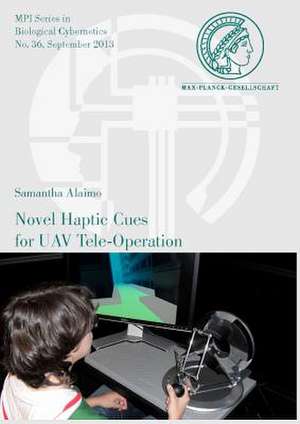Novel Haptic Cues for Uav Tele-Operation: Mpi Series in Biological Cybernetics, cartea 36
en Limba Engleză Paperback
Preț: 489.63 lei
Preț vechi: 604.47 lei
-19% Nou
Puncte Express: 734
Preț estimativ în valută:
93.72€ • 101.84$ • 78.78£
93.72€ • 101.84$ • 78.78£
Indisponibil temporar
Doresc să fiu notificat când acest titlu va fi disponibil:
Se trimite...
Preluare comenzi: 021 569.72.76
Specificații
ISBN-13: 9783832535278
ISBN-10: 3832535276
Pagini: 241
Editura: Logos Verlag Berlin
Seria Mpi Series in Biological Cybernetics
ISBN-10: 3832535276
Pagini: 241
Editura: Logos Verlag Berlin
Seria Mpi Series in Biological Cybernetics















